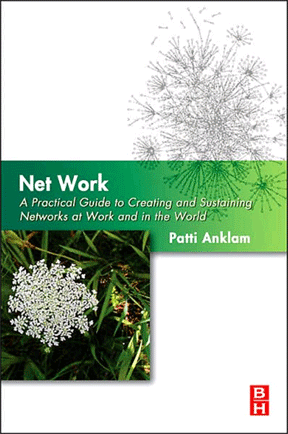When I wrote the “first SM” in my blog introducing The Four SMs, I added the note:
During this time I’ll also be mulling (and hoping for your ideas) on the shadowy “5th” SM — the networked, community, purposeful use of social media to bind networks, causes, and events. I just don’t have a name for it yet.
Both Lilia Efimova and Harold Jarche responded to my ill-formed request with blogs of their own, and suggested the terms Cause SM and Emergent SM, respectively.
Both of these helped gel my thinking, and I’m going with Emergent SM, because it can encompass:
- Causes
- Crowds
- Events
- Conferences
- Networks and communities
So I’m defining this SM as the networked, community, purposeful use of social media to generate relatedness among crowds and emergent networks in support of ideas, causes, and events. It’s still a little mushy, but I just can’t go on adding categories forever and I need to acknowledge the ways that people are using social media to create networks.
An event, idea, or cause provides an attractor and social media enable a flow of conversation around it. These networks may be transitory, as in
- Flash mobs like the one that got people dancing at Crown Fountain in Millenium Park in Chicago
- Responses to events that may mobilize, inform or heighten awareness of significant natural or man-made disasters (like the recent #aquapolypse in the Boston area or the far more significant stream of detail on the distaster in the gulf)
- Back channel conversations during conferences
Or they may be more permanent, truly cause-related as in the examples that Lilia gives: “political campaigns, citizen-led disaster response, charity/fundraising/helping others, working on attitude/legislation changes.” Using social media for causes has been championed, research, taught, and evangelized by Beth Kanter, who has just published, with co-author Allison Fine, The Networked Nonprofit.
Lilia emphasizes that we need to think about these networks in terms of complexity, as does Harold, who nails it with a definition of emergence from Esko Kilpi, which deserves repeating here:
Complex organizations are neither products of random experimentation, nor can they be perfectly designed beforehand and managed efficiently top down. The Internet could not have been designed top down, nor can any living organism be planned from outside.
What is going on in these cases is called emergence. Interaction itself has the capacity to create emergent structure, coherence, consistency and change.
I had occasion to remind myself of the cycle of network creation and transition that I describe in Net Work. Networks can be purposefully and intentionally designed, but they can also emerge. Thus a transitory or cause related network can produce a significant enough attractor that one or more people will bring leadership to it, and, with proper skill, manage its context in a way that makes a difference in the world.
I still need to complete the rest of this series, with my commentary on the issues and challenges faced by each of the SMs. If you need a sneak peek, you may want to look at my updated slide deck on the 5 SMs.



Pingback: Harold Jarche » “collaboration is extremely important”
Pingback: 3 KMs and 4 SMs — Mathemagenic
Pingback: Patty Anklam Networks, Complexity, and Relatedness « Fredzimny's Blog